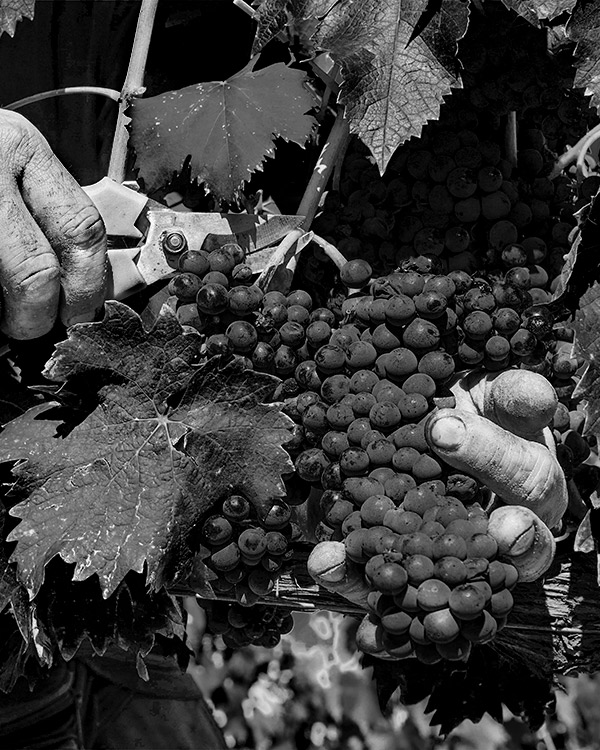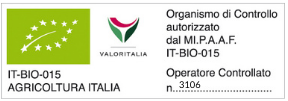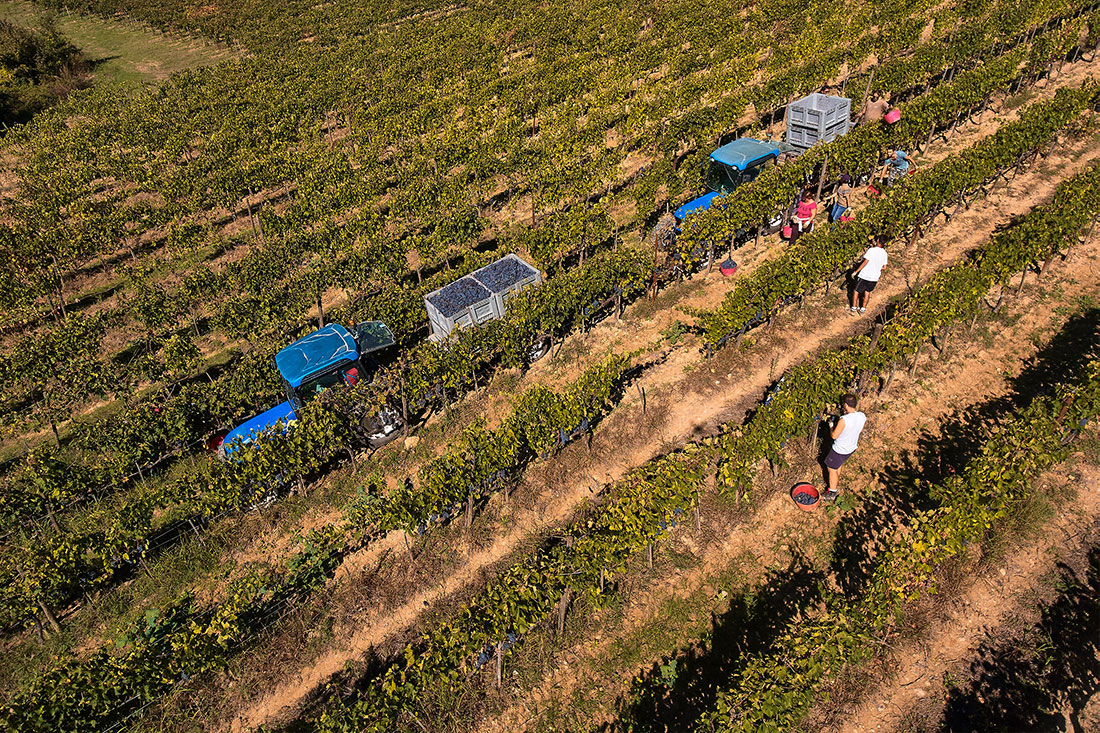Territory
“Mark the sun’s heat, how that to wine doth change | Mix’d with the moisture filter’d through the vine” (D. Alighieri). You can observe it in this splendid part of Tuscany called Montepulciano.
The Wealth of Montepulciano
Montepulciano is a charming medieval town between the Val d’Orcia and the Valdichiana Senese in south-eastern Tuscany. It lies gently on hills that do not exceed 605 metres above sea level. This area was certainly inhabited by the Etruscans (3rd-4th centuries BC), who already recognised its extraordinary potential for red wine production. Wine is the first wonder of this area, the land of Vino Nobile di Montepulciano DOCG. Montepulciano offers various tourist itineraries amidst evocative landscapes, history, art and culture. The area’s traditional cuisine brings a fitting end to any day, with simple, typically country-style dishes such as pici al sugo di nana, pecorino cheese, fine meats, and local game.
The Cantine Dei Vineyards
The generous Montepulciano area is home to Cantine Dei’s five production areas: Martiena, Bossona, La Ciarliana, La Piaggia and Cervognano. The five vineyards share the same exposure, soil composition and other privileges that make the Vino Nobile di Montepulciano area unique. However, they have different characteristics: the Martiena area (350 m above sea level) is mainly composed of fresh, medium-textured sandstone. Vigna La Piaggia (350 m a.s.l.), dedicated to the company’s flagship wine, Vino Nobile Madonna della Querce, has soil of Pliocene origin dating back 1.8 – 6.8 million years, with a homogeneous, sandy, tufaceous and clayey mixture. Vigna Bossona (400 m a.s.l.), from which we produce the cru Riserva Bossona, is characterised by a surface layer of tuff and a subsoil of skeletons and fossils of Pliocene origin. Finally, the vineyards of La Ciarliana (300 m a.s.l.) and Cervognano (250 m a.s.l.) are rich in clay and limestone..

The Cantine Dei Vineyards
The generous Montepulciano area is home to Cantine Dei’s five production areas: Martiena, Bossona, La Ciarliana, La Piaggia and Cervognano. The five vineyards share the same exposure, soil composition and other privileges that make the Vino Nobile di Montepulciano area unique. However, they have different characteristics: the Martiena area (350 m above sea level) is mainly composed of fresh, medium-textured sandstone. Vigna La Piaggia (350 m a.s.l.), dedicated to the company’s flagship wine, Vino Nobile Madonna della Querce, has soil of Pliocene origin dating back 1.8 – 6.8 million years, with a homogeneous, sandy, tufaceous and clayey mixture. Vigna Bossona (400 m a.s.l.), from which we produce the cru Riserva Bossona, is characterised by a surface layer of tuff and a subsoil of skeletons and fossils of Pliocene origin. Finally, the vineyards of La Ciarliana (300 m a.s.l.) and Cervognano (250 m a.s.l.) are rich in clay and limestone..
The Zoning
This is the name of our method of subdividing the vineyards. Within the same production area, soil and climate conditions can vary greatly, even just a few metres apart, and they strongly influence the character of the wine. Zoning is therefore the portioning of the land into sub-zones with homogeneous characteristics, such as the same soil composition and the same productive capacity of the vine. We have therefore managed to define a different sub-zone for each of our vineyards, which we then treat according to its specific needs. The great advantage is, on the one hand, the strong link between the terroir and the wine, which can be identified as coming from a specific vineyard, and, on the other hand, the establishment of a profound harmony between our work and the terroir itself.
Sustainability in the Vineyard
Soil preparation is guided by a deep respect for the earth. A procedure which, by limiting the amount of tillage and the passage of vehicles over the soil, keeps the soil microbiologically alive. At Cantine Dei I have chosen to use natural, organic animal manure, which is balanced according to the development of the plant in its vegetative phase. In addition to the fertilisers, we create cover crops using different essences, selected according to the composition of the soil: oats and rye, clover, mustard or rape. In particular, oats and rye improve soil structure in a natural way, clover provides the nitrogen necessary for the vital balance of the plant, mustard drains the soil and has a detoxifying effect on certain bacteria and fungi, and rape limits the development of weeds. In addition to this, we gain additional organic matter and biomass at mowing time. The decision not to use chemical weed killers increases the very vitality of the soil, and careful canopy management helps prevent vine diseases. This is how we achieve quality wine that is sustainable and in tune with nature.




